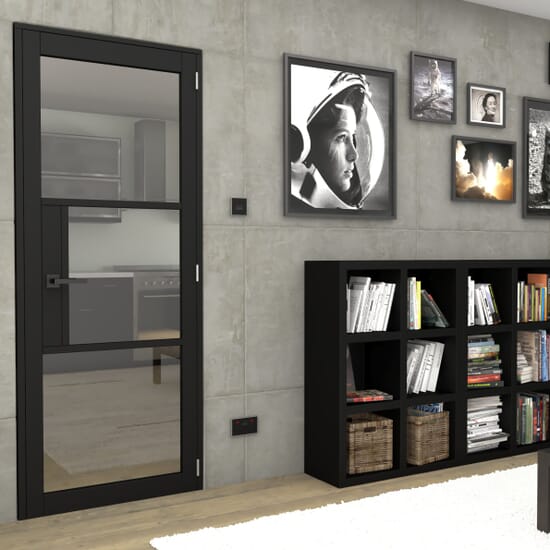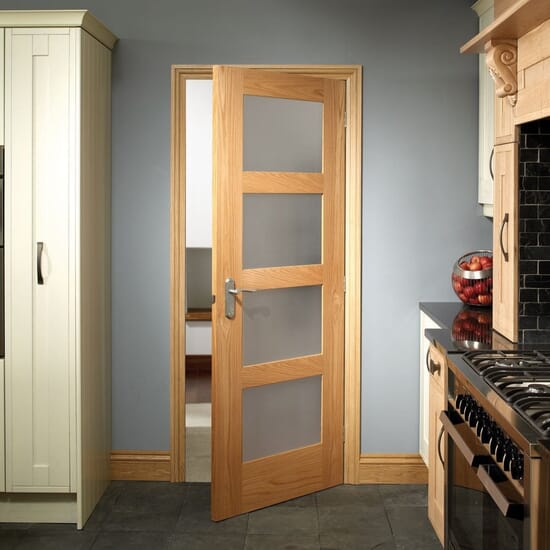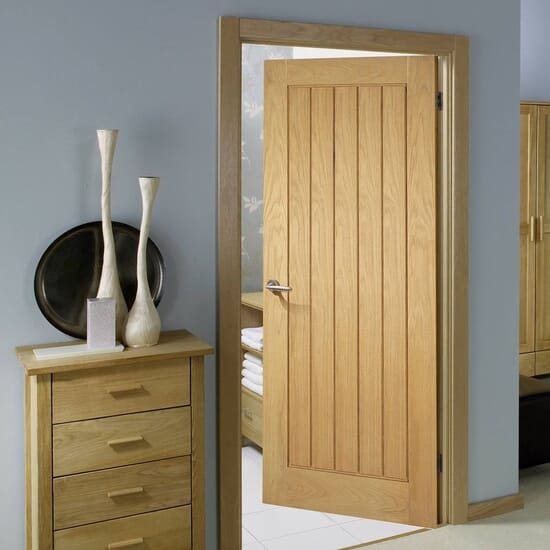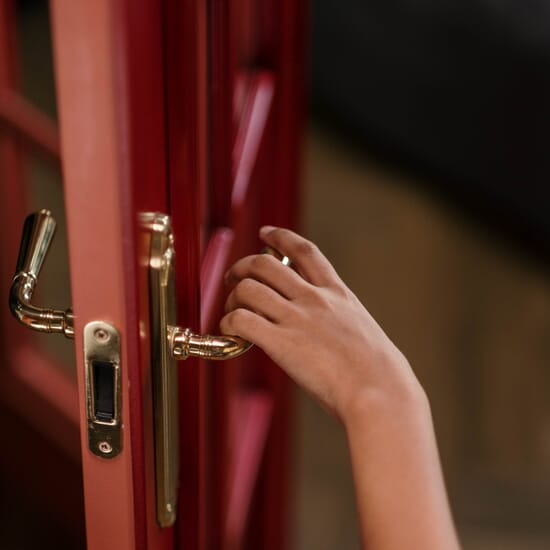How To Treat Unfinished Natural Wood Internal Doors
These are the most popular options:
- Wax or oil
- Stain and varnish
- Primer, undercoat and topcoat of paint
It’s a good idea to try out a test patch first (perhaps on the bottom edge of the door) if you’re not sure which final look you prefer.
Waxing
This is one of the easiest options and if you have chosen solid wood doors, it is one of the most beautiful ways to show off the splendour of natural wood. Just brush it on and use a cloth to remove any excess. Use two coats (check the packaging for how long to wait between coats) and then buff with a clean cloth. The more you buff, the glossier it becomes, so you can choose the level of sheen you prefer. The only thing to note is that waxing will darken the colour of the wood slightly so be aware of this before you begin.
Staining
Wood stain is available in a variety of colours giving you the opportunity to match the doors to your decorative scheme but still allowing the beauty of natural wood to show through. It is simple to paint on and any excess can be removed with a cloth. You can build up multiple thin coats to deepen the colour – never apply one thick coat as this results in a patchy finish. Stain is a wood colouring, not a protective coat so once fully dried, you should proceed to add a layer of varnish or wax.
Varnishing
Varnish is one of the most hardwearing and moisture resistant finishes for natural wood. It is applied in the same way as paint (see below) and should ideally be allowed to dry for 24 hours between each coat. Both gloss and satin finishes are available and may also be tinted in various shades. Even clear varnish, however, will still give a yellowish tinge when dry.
How To Care For Prefinished Engineered Wood Doors
When buying this type of internal door, it is worth checking with the seller or manufacturer which finish has been applied to the door. If you have a spare tin handy, you can always make small touch ups if the surface happens to get knocked or damaged.
How To Paint Primed Interior Doors
Tools required:
- medium and fine sandpaper
- undercoat
- topcoat in chosen colour
- paintbrushes
- rollers
- cotton cloth
- dust sheet
- masking tape
- screwdriver
- door stop
- dust mask.
- Remove your door from the hinges or paint before hanging. This makes it easier to paint and dry, and it also helps you avoid spills or stains on walls and carpets. After you’ve removed the door, prepare the area where you are going to paint it. A lot of people prefer to do this outdoors to avoid mess but it you’re doing this indoors, you’ll need a dust sheet and a table. Put the dustsheet over the floor and put the table on top. Your door should hang off the edge of the table, giving you free access to paint one side of it and the trim. Once you have painted this side and it’s dry, you should turn it over and complete the other side of the door.
We also advise removing hardwear when painting so you can get a complete finish – any door handles, hooks, hinges, etc. If you can’t remove them for whatever reason cover them in masking tape.
Make sure you are working in a well ventilated area also to get rid of the fumes quickly. - One you’re all set up, start by applying an undercoat. While this may seem like an unnecessary step, it’s important if you want a professional finish as undercoat gives a uniform, smooth and even surface for the topcoat to adhere to. Check the tin for drying times before moving on to the next step. Lightly sand down all surfaces with medium sandpaper and wipe gently to remove dust.
- Apply two coats of topcoat in your chosen colour. Refer to the instructions on the tin so that you know how long to wait between coats – applying a second coat too soon will result in a sticky, uneven surface. Sand the door lightly with fine sandpaper between coats, removing dust before moving on to the next coat. Make sure the door is completely dry before sanding and use a brush to remove all remnants of dust before applying the next coat. If your paint looks relatively smooth you might not see the point in sanding between coats, but sanding will get rid of any air bubbles and make sure the finish looks amazing. Make sure you only sand the painted layer lightly however, you don’t want to remove all the paint or thin the door surface. When done painting, you, may want to wipe your doors down with a damp cloth.
- Once your doors are painted and cleaned, replace the door handles or knobs and hang the door in place.
How To Paint A Panelled Door
A flush door is fairly straightforward but a panelled door offers its own peculiarities when it comes to painting. This is the order for painting recommended by professional decorators.
- Start with the panels. Use a brush or a small roller to follow the direction of the wood grain to cover the panels in a thin layer of paint.
- Next paint the edges around each panel. These may be shallower than the panel or yours may have beaded edges.
- Now paint the middle sections, first the vertical (the “muntin”) and then the horizontal (the middle “rail”). Using a roller here will speed things up.
- The left and right “stiles” come next. Use the roller in a vertical direction.
- Complete the job by painting the top and bottom rails horizontally.
Speed is of the essence when it comes to painting a panelled door as keeping a wet edge in one area before you start painting a neighbouring area can be difficult. A roller can help speed things up. Using a very narrow brush to ensure accurate painting of each area without spilling over into the next is another solution.
In reality, many painters begin with the top pair of panels and the stiles, muntin, and rails around them, and then move to the lower pair of panels.
Expert Tips For Painting Internal Doors
- Always paint in the direction of the wood grain.
- Don’t overload the paintbrush. Start my making two or three separate downward strokes next to each other and then fill in by cross brushing. Finish off with a light upward stroke. This helps avoid the runs and drips associated with painting a hanging door.
- Between coats, wrap your brush or roller in cling film or seal in a plastic bag to stop it from drying out.
- If you’re touching up doors which have previously been painted, lightly rub all over with sandpaper before following the above steps to achieve a smooth finish and provide a “key” for the new layers of paint to adhere to.
- If you’re working with old doors which have been painted many times you might want to remove the paint before beginning again. There are many products on the market designed to do this or you can use a paint stripping tool. It may be more cost effective to have them professionally stripped which can cost as little as £20 per door. In either case, fill any gaps with wood filler and sand smooth before priming.
- Use of a roller or a brush comes down to personal preference. A roller is certainly quicker but leaves that signature stipple which is not always aesthetically pleasing on a door. You can avoid this by immediately brushing back over a rolled area with a wide brush.
- Clean your brushes and rollers thoroughly when finished to prolong the life of your tools.
Painting something else? We also have handy guides on how to paint interior french doors and how to paint interior bifold doors. Check out our full range of internal doors to find the right one for your home and if you need any guidance, our experienced customer service team is on hand to help so get in touch.







